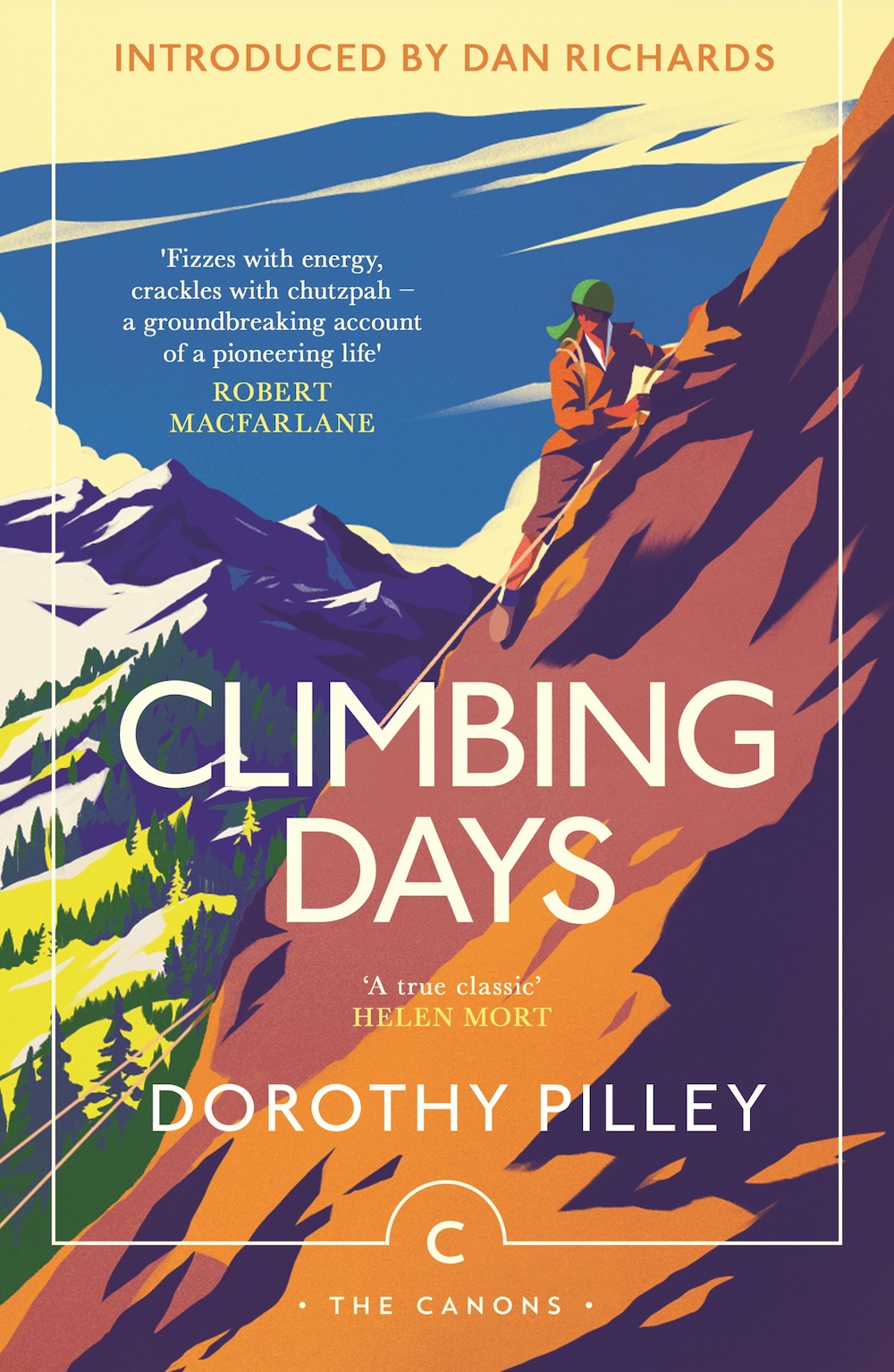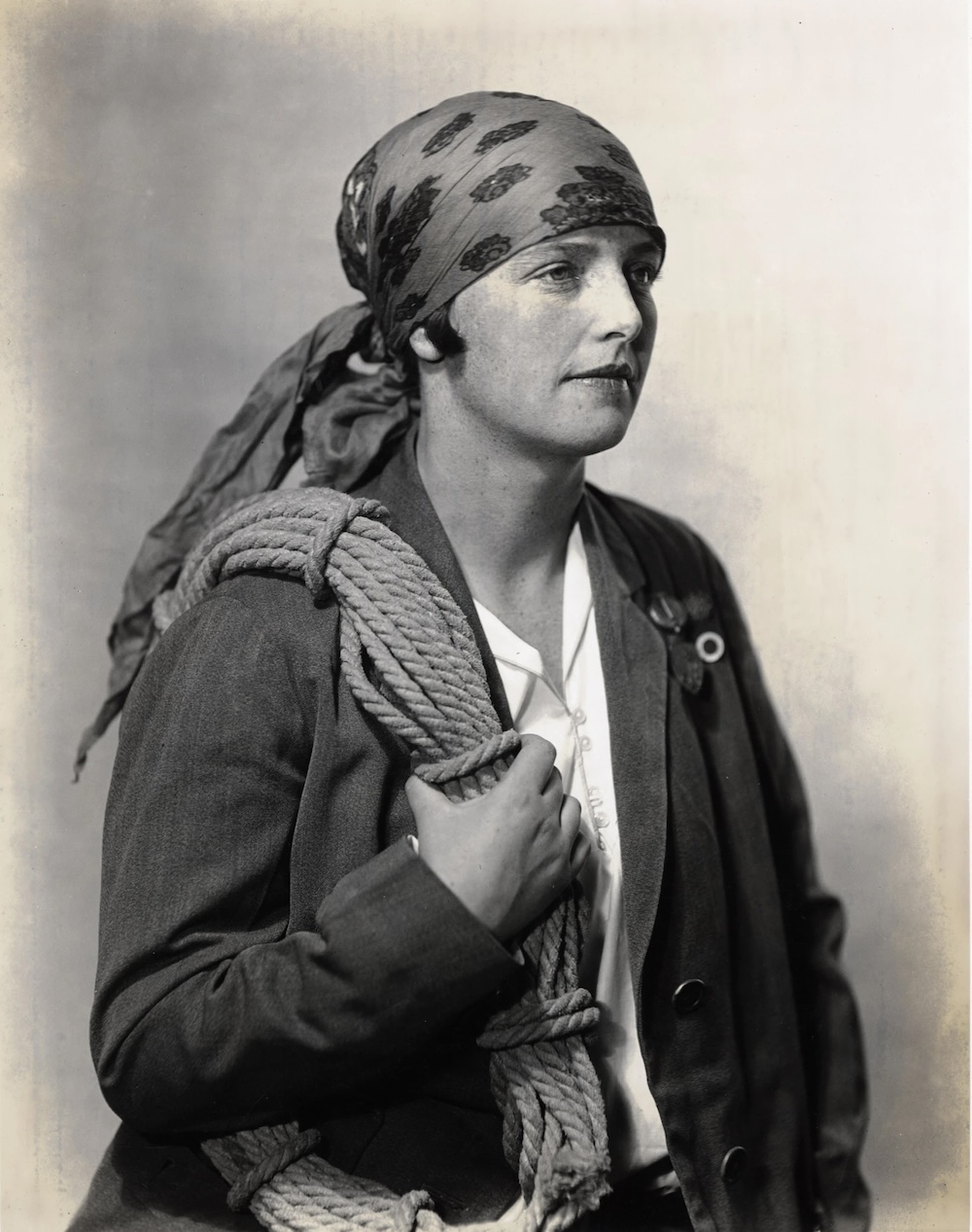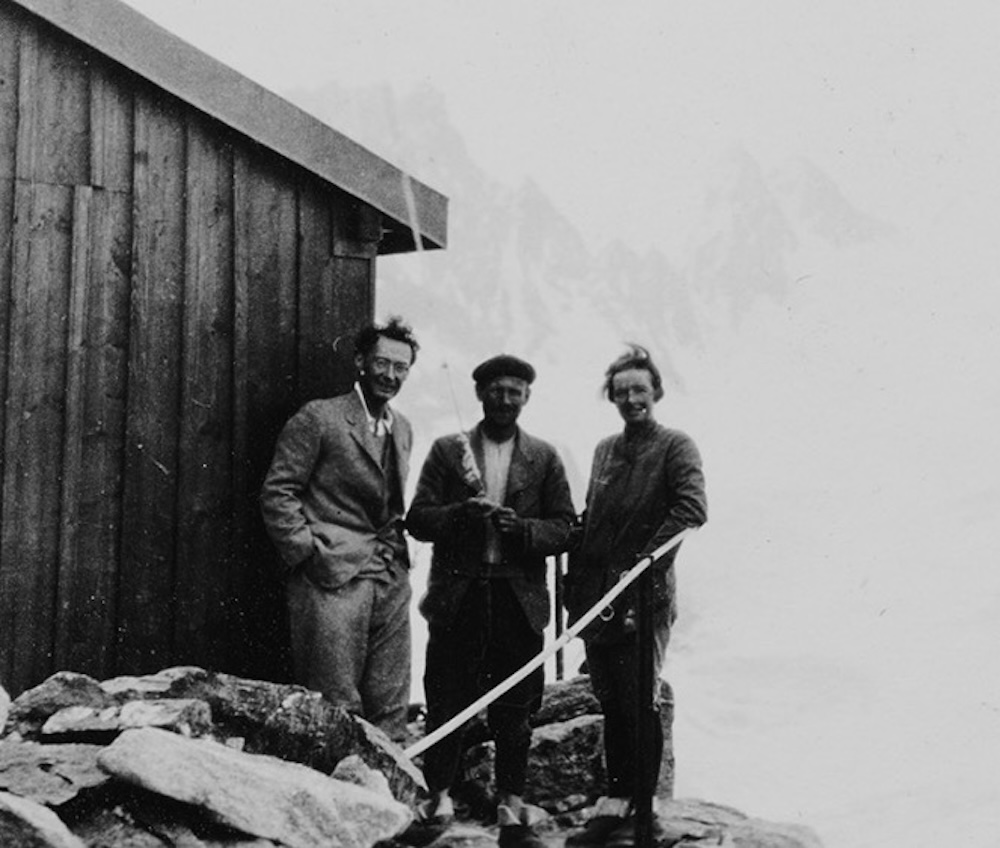Published in a new edition by Canongate almost 90 years after its initial print run, Dan Richards introduces ‘Climbing Days’ — a daredevil mountaineering memoir of adventure, near-death slips and rapturous achievement in high places, written by his great-grand aunt, Dorothy Pilley.

On July 4th, Canongate republished Dorothy Pilley’s memoir Climbing Days, a long overdue return to print for a book so beloved and revered. Here it is, refreshed and updated, in a handsome new cover, a beautiful object as well as an important, exhilarating, poetic record of a life which ‘defied both gravity and societal norms’ to quote Natalie Berry – one of several Pilley-devotees in the climbing and writing world to offer warm words of support and enthusiasm for the Canon reissue.
An autobiography of Dorothy’s early years and adventures, Climbing Days is filled with physical feats and triumph over adversity, a coming-of-age story and a record of two extraordinary people bound together by a passion for mountaineering. Between the lines of its pages, a great love story can be traced, a delight in high places and a questing partnership which endured for over fifty years.
As a child, I knew very little about my great-grand aunt, Dorothy Pilley. I was aware of her, as a child knows the names of cities but could not place them on a map, but she seemed always to me mentioned in conjunction with her husband, Ivor Armstrong Richards: I.A.R. – mysterious initialled academic and literary critic, whose books we had in the house but nobody seemed to have read: revered, abstruse relics from another age.
There were stories of their ‘royal visits’ to my father’s boyhood home. Slightly awkward gatherings, the pair impossibly elderly to his young eyes. There were rumours that they were mountaineers but the walking sticks made it all seem so unlikely . . . and there was another enigma, a name, a particular mountain: the Dent Blanche.
In Dr Richard Luckett’s succinct preface to I.A.R.’s Selected Letters, Dorothy Eleanor Pilley/Richards (1894–1986) is described as:
‘The daughter of a strict father . . . [who] achieved her independence by climbing mountains, writing for newspapers, and working as a secretary for the proto-feminist British Women’s Patriotic League. Her looks and vivacity ensured her the many suitors she periodically repulsed as threats to her hard-won liberty. Ivor Richards (whom she met in Wales in 1917 and married in Honolulu on 31 December, 1926), though a special case, had not only her disinclination to overcome, but her family’s as well . . . The marriage was an exceptionally happy one.’ 1
Luckett’s biographical sketch runs on to say that Dorothy’s account of their early mountaineering feats together – Climbing Days (London, 1935) – is a classic of its kind, ‘and her significance as a pioneer of women’s climbing is well recognised.’ I was in my mid twenties when I first read Climbing Days; it was an experience that changed my life. Not only did it reveal to me the astonishing truth about my relatives – their dynamism, tenacity, bravery, physical strength, positivity and zeal for the peaks – but the extent of Dorothy’s trailblazing example and practical support for woman’s climbing around the world.
The memoir inspired me to follow in her footsteps (and handholds) in order to tell her story and celebrate her many achievements before and after the autobiography’s publication, a daunting task. The Oxford Dictionary of National Biography calls Dorothy ‘one of the most outstanding mountaineers of the interwar and post-war periods.’ But perhaps her most enduring legacy is co-founding The Pinnacle Club in Snowdonia, the world’s first female climbing club, with the aim of encouraging rock climbing and mountaineering amongst women (the club celebrated its centenary in 2021). As Dr Ann Kennedy Smith has noted, the fact that Dorothy took on the editorship of the Pinnacle Club Journal provided a public platform for female climbers’ voices to be heard without interference from male editors. 2 ‘Both the club and its journal helped to normalise climbing as something all women could do, not just a few extraordinary individuals: as a lifelong feminist, Pilley wanted to use her experience and enthusiasm to encourage others.’
In terms of Dorothy’s own mountaineering, her record of achievement is vast and the exploits detailed in Climbing Days are only the tip of the Eiger. Her memoir’s chapter titles tell of her passion for the peaks: the Lake District, Skye, French Alps, the Mont Blanc Chain, Corsica, the Swiss Alps, the Pyrenees, Italy. Not included in the book are adventures and first ascents in China, Japan, Korea and Burma.
The Wander Years chapter details a period Dorothy spent climbing alone in the North American and Canadian Rockies. At the end of that trip (summer 1926) she climbed Mount Baker, the first woman to do so. I.A.R. had travelled over to attempt the mountain with her and ask if she’d reconsider his proposal of marriage (she did).
A film made during that trip shows them leaping crevasses, cutting steps up snow banks and striding purposefully up icy slopes. The whole thing looks fantastically dangerous and glamourous. Berets are worn; zeniths are vanquished; the film ends with the subtitle Excelsior!
Climbing Days records the fight for acceptance, access and equality which defined much of Dorothy’s life. When she started climbing, women were routinely chaperoned for walks round London parks, ladies in trousers risked derision and violence, and male climbers would disavow climbs that female mountaineers had completed, as poet Helen Mort reports so brilliantly in her 2016 collection, No Map Could Show Them:
‘When we climb alone
en cordée feminine,
we are magicians of the Alps –
we make the routes we follow
disappear’ 3
It was stories like this, and how such attitudes were confronted, countered, and blown sky high by The Pinnacle Club et al, that spurred me to learn to climb (badly), the better to follow and write about Dorothy’s accomplishments. I realised that an attempt to write about such a life could not be vicarious – contact with Alps and munros were vital to the subject – so I picked my way gingerly up several routes in Snowdonia and the Cairngorms, scrambled in the Lake District and scaled some summits in Spain and Switzerland beloved of Dorothy and Ivor. And I met many people who’d known and loved them, discovering so much about their relationship with each other and my family – and a great deal about my father, as well as myself. All the time I was closing in on the Dent Blanche: that mysterious, serrate peak in the Alps of Valais, the magnificent apex of Ivor and Dorothea’s climbing lives.
That book, also named Climbing Days – in light, honour and celebration of Dorothy’s memoir – was published by Faber in 2016. I meant it to stand as a companion and commentary to the original but, until now, it has had to carry the flame for Dorothy’s memoir since that has been out of print for several decades. I’ve always found this hard to fathom since her autobiography is a superb chronicle of vertiginous exploits and derring do, together with beautiful, moving descriptions of landscapes, friendships, triumph and tragedy. In short, a true orographic odyssey, in pursuit of the sublime, aware all the while of the risks involved.
The copy of Climbing Days I first read was a Secker & Warburg hardback of 1965 and it is that version upon which this new Canons edition is based, complete with all the wonderful photographs plus a few more – including the portrait below – together with 1935 hand-drawn endpapers and a new introduction (by me). We’ve included Dorothy’s original Preface and the 1965 Retrospection which opened the second edition, in which the author looks back on her community’s achievements, the evolution of alpinism to date, the current challenges and some hopes for the future.
One of my great discoveries whilst writing about Dorothy was a recording made towards the end of her life in which she speaks about Chris Bonington’s summiting of Everest in 1985, several years after his previous attempt which ended with the tragic deaths of his companions, Joe Tasker and Pete Boardman.
The tape was made by her nephew, Anthony, and on it one can hear her moving crockery and cutlery around to elucidate the story she’s telling. I find the whole thing very moving and illustrative of how connected she remained with the contemporary climbing world. Even in Dorothy’s ninth decade, her energy and optimism is audible, just as it radiates from the pages of this memoir — she led by example, blazed a trail – and I’m delighted to be able to help share and celebrate her life and ongoing legacy.
‘For me, as well as her mountaineering achievements, it was the way she brought a feminine perspective to mountaineering,’ Dr Sarah Lonsdale told me recently, ‘the gentians too beautiful to tread on, the hairpin needed 10,000 feet up a mountain . . . the way she worked so hard to find the right words to describe what she saw’, as evinced in the diaries she kept as a daily journal of her life for nearly eighty years.
The successful climber must be adaptable and expedient, evolve their thinking in light of challenging territory, seek out and articulate routes through, on and up. As on rock, so on the page.
Dorothy Pilley – pioneer, leading light and inspiration.
So here’s to Climbing Days, back out in the world nearly 90 years after first publication. May it find readers old and new alike.
Perhaps it will rouse you to journeys out and up, as it did me.
If so, good luck.
Take care.
Go well.
Dan Richards
July, 2024


Top: Dorothy Pilley c. 1926 (The Alpine Club Library). Bottom: I.A. Richards, Joseph Georges, and Dorothy Pilley at the Bertol Hut, Switzerland, in 1928 (Antoine Georges).
________________
1 Selected Letters of I. A. Richards, I. A. Richards, John Constable, and Richard Luckett, Clarendon Press, Oxford, 1990
2 https://akennedysmith.com/2021/01/30/manless-climbing-dorothy-pilley-richards-1894-1986/
3 ‘An Easy Day for a Lady’ – No Map Could Show Them, Helen Mort, Chatto & Windus, London, 2016
*
This is an edited extract from Dan Richards’ introduction to ‘Climbing Days’ by Dorothy Pilley, newly republished by Canongate as part of their Canons series. Buy a copy here (£12.34).